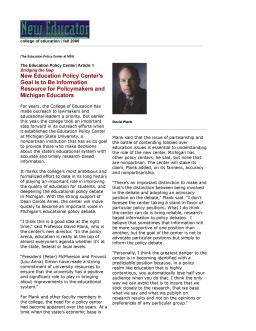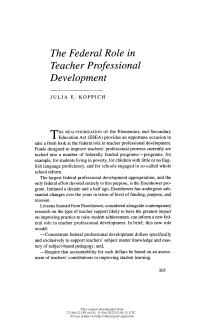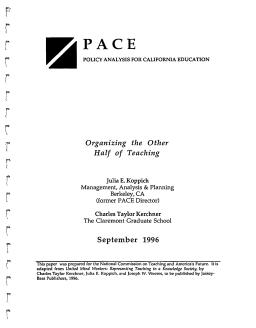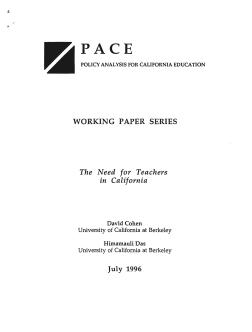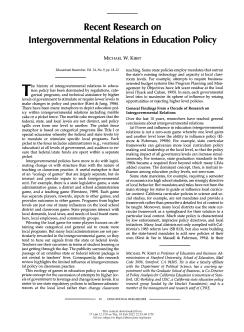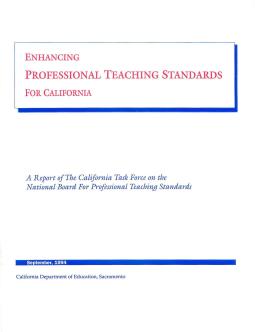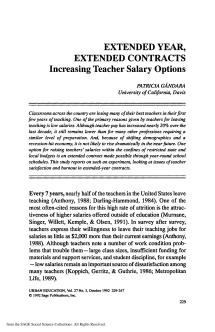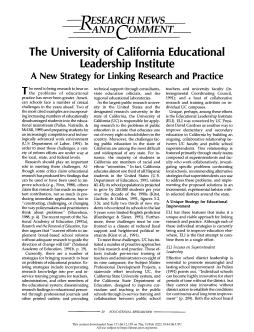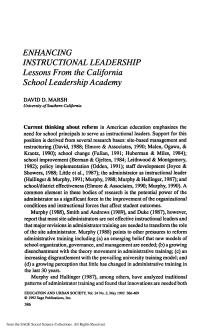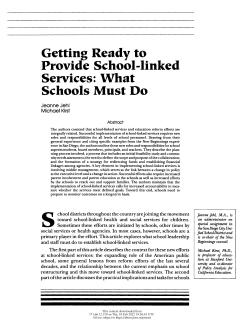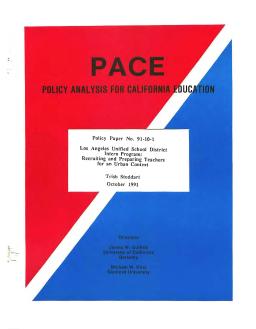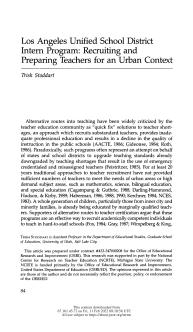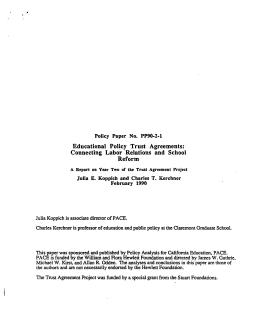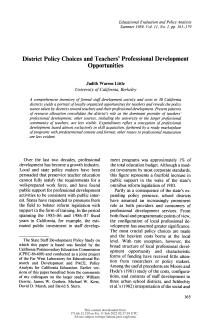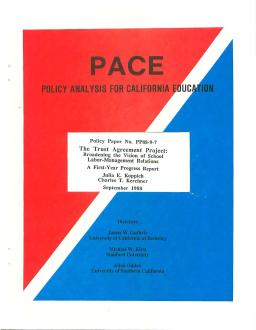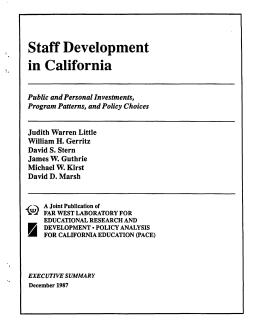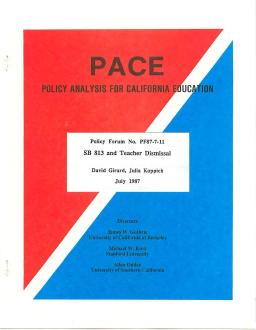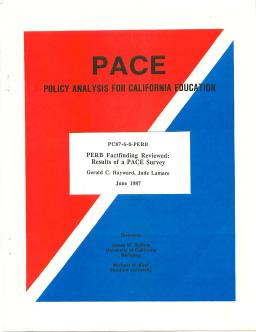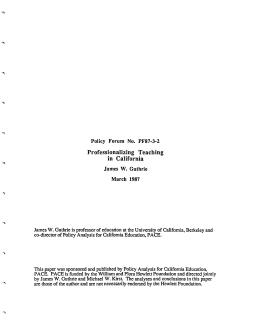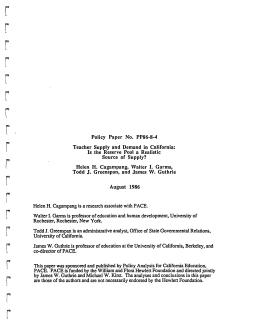Published
Summary
This report discusses an initiative by the California Children and Families Commission to expand the availability and quality of early care and education programs. The project includes recruiting and training early care providers, improving professional preparation, and implementing strategies to retain trained providers. The report provides information on existing training programs available to early childhood professionals and students, including accredited/non-accredited opportunities at community colleges, state universities, private colleges, and child care resource and referral agencies.
New Lessons for Los Angeles
Published
Summary
California is experiencing a shortage of quality childcare options for families, despite increased funding from the government and parents. Local policymakers in Los Angeles County are conducting research to determine where childcare supply falls short of demand and how to allocate resources to address the issue. Two recent studies provide options for policymakers to consider.
New Education Policy Center's Goal Is to Be Information Resource for Policymakers and Michigan Educators
Published
Summary
Michigan State University's College of Education has established the nonpartisan Education Policy Center to provide lawmakers and educational leaders with accurate, research-based information to improve the state's educational system. With the support of the university's resources, the center aims to play an important role in deepening the policy debate and bringing about improvements in the system. The center was established due to a lack of systematic communication between researchers and policymakers in Michigan.
Published
Summary
Governments are expanding the availability of portable child-care vouchers to boost working parents' purchasing power, rather than simply building more child-care facilities. Despite this, parents in poor communities still have limited choices due to cost and supply. Many eligible parents are not using subsidies, resulting in high out-of-pocket expenses for child care. Low-income working mothers make tough choices, working more hours or relying on informal providers, resulting in several transitions for children throughout the week, which experts suggest is not good for young children.
Published
Summary
A study conducted for the Los Angeles County Department of Public Social Services aimed to determine the supply and demand of licensed childcare in the county, with a focus on low-income communities and special types of care. The survey analyzed data at three levels: county-wide, service planning areas, and supervisorial districts. Results showed disparities in childcare supply across the county, with shortages in special types of care and little information on where childcare is needed.
Published
Summary
The reauthorization of the Elementary and Secondary Education Act provides an opportunity to reconsider the federal role in teacher professional development. The largest federal professional development fund is the Eisenhower program. Lessons from Eisenhower and contemporary research suggest that federal funds should be focused exclusively on subject matter knowledge and pedagogy and accountability should be based on assessment of student learning. The purpose is to generate discussion on how to more effectively use federal dollars to improve student achievement.
Published
Summary
The 1975 Rodda Act, also known as the Education Employment Relations Act, allowed California public school teachers to collectively bargain for employment terms. Similar laws exist in 37 states based on the National Labor Relations Act. This paper advocates for transforming education labor relations to position teachers and unions as leaders in creating a 21st century education institution. The authors hope to inform discussions on improving education quality for California's 5.2 million public school students.
Published
Summary
This baseline analysis examines the projected need for teachers in California based on student enrollment projections, expected rates of new teachers and teacher retirements. However, it does not take into account recent policy changes such as the budget's call for reductions in class size or the proposed changes to teacher credentialing requirements. These changes will impact the need for teachers in California. The analysis shows regional teacher shortages, which are expected to persist despite the new policies.
Published
Summary
Intergovernmental relations in education policy are dominated by regulations, programs, and technical assistance. A metaphor called "ecology of games" captures how each level of government maximizes its influence, affecting state and local policy-making. Classroom practice is limitedly influenced by intergovernmental policy, as local demands, taxes, and needs also play a role. State policies are easier to influence administrators than to change teaching. Each level of government tries to maximize its sphere of influence.
A Report of the California Task Force on the National Board for Professional Teaching Standards
Published
Summary
The California Task Force on the National Board for Professional Teaching Standards, consisting of educators, administrators, parents, and officials, deliberated for eight months on how a national voluntary certification system can impact California's education landscape. They explored questions on the standards, assessment methods, incentives, and potential benefits for teachers, students, and communities. The report aims to start a dialogue and encourage continued improvement in California's schools.
Increasing Teacher Salary Options
Published
Summary
Many new teachers leave the profession due to low salaries, which have only slightly increased despite requiring similar preparation to other professions. A possible solution is extended contracts made possible by year-round school schedules, which could raise salaries within restricted budgets. This study examines the effects of extended-year contracts on teacher satisfaction and burnout.
A New Strategy for Linking Research and Practice
Published
Summary
The US faces critical challenges in education, such as incorporating disadvantaged students and preparing them for a competitive, tech-driven work environment. To meet these challenges, reform efforts are underway. Despite claims that educational research has produced few applicable findings, it has contributed by changing how policymakers and practitioners think about problems. The National Academy of Education argues that implementing broad-based reforms without adequate research will fail. Research must play an important role in meeting these challenges.
Lessons from the California School Leadership Academy
Published
Summary
American education reform stresses the importance of principals as instructional leaders, but most are not effective in this role. Research suggests that innovative administrator training is needed to transform the role of site administrators. Content and process criteria have been identified, and several state-sponsored training programs have been established to meet them. One such program is the California School Leadership Academy, which provides a three-year program for aspiring and practicing site administrators with an emphasis on instructional leadership.
What Schools Must Do
Published
Summary
This article contends that school-linked services and education reform efforts are integrally related. Successful implementation of school-linked services requires new roles and responsibilities for all levels of school personnel. Drawing on general experience and citing specific examples from the New Beginnings experience in San Diego, the article outlines these new roles and responsibilities for school superintendents, board members, principals, and teachers. It describes the planning process involved, a process that includes an initial feasibility study and community needs assessment; a...
Recruiting and Preparing Teachers for an Urban Context
Published
Summary
Traditional teacher recruitment fails to meet urban area and high-demand subject needs. Alternative certification programs offer a solution but are criticized for being a "quick fix". The LAUSD Intern Program case study addresses questions on effectiveness and preparation of alternative-certified teachers. On-the-job training is context-specific and not a replacement for college-based education.
Published
Summary
Traditionally, educational evaluation has focused on measuring student achievement and program performance. However, education reforms are now linking schooling to economic development, leading to a shift towards managerial expectations and politicization of the field. This article explains the human capital imperative and its relation to education, summarizes the history of educational evaluation, and outlines an alternative model for educational appraisal in the context of government-led education system reforms aimed at enhancing national economic growth.
Recruiting and Preparing Teachers for an Urban Context
Published
Summary
This article discusses the criticism of alternative routes to teaching, which are seen as inadequate and leading to declining instructional quality, but are attempting to address the shortage of qualified teachers in urban and high demand subject areas. Supporters argue that they are effective in recruiting competent teachers for hard-to-staff schools and replacing the emergency credential system with rigorous training. The article highlights the impact of teacher shortages on inner city and minority students who are currently being educated by marginally qualified teachers.
Connecting Labor Relations and School Reform: A Report on Year Two of the Trust Agreement Project
Published
Summary
The Trust Agreement Project, initiated in September 1987, is a joint effort of 12 California school districts and their teachers' unions. It enables teachers and school management to develop agreements on professional issues beyond the traditional scope of collective bargaining. The agreements cover topics like teacher evaluation and curriculum development, and aim to enhance educational capacity by promoting collective responsibility for educational processes and outcomes. The project appears to be altering decision-making processes and encouraging collaboration between unions and management.
Published
Summary
An inventory of 30 California districts reveals their policy stance on teacher professional development, which primarily consists of skill acquisition through district-led programs. Other sources, such as universities or professional communities, are less visible. The districts are the dominant providers of development opportunities, with expenditures reflecting a ready marketplace of predetermined programs. Alternative routes to professional growth are less evident.
Broadening the Vision of School Labor-Management Relations—A First-Year Progress Report
Published
Summary
The Trust Agreement Project aimed to develop new forms of school organization and relationships among teachers and administrators. Six California school districts participated, each selecting an educational policy area for trust agreement development. Trust agreements produced role changes, fostered collaboration, and altered decision-making. These initial results show promise in leaping school districts from the 19th-century industrial model to a more appropriate 21st-century model.
Public and Personal Investments, Program Patterns, and Policy Choices—Executive Summary
Published
Summary
The California Staff Development Policy Study was initiated to assess the possibilities and limitations of staff development in improving classroom teaching and learning. The study aims to answer four questions related to California's investment in staff development, how staff development activities are administered, and how teachers and administrators judge their effectiveness. The study yields eight main conclusions, presented in terms of investment and focusing on improving the capacities and commitments of California's educators.
Published
Summary
In 1985, the Policy Analysis for California Education (PACE) convened a group of attorneys and education policy experts to discuss the effect of Senate Bill 813 on teacher dismissal. They explored varying interpretations of its provisions, contrasted practical experiences with legislative intentions, and outlined recommendations to improve the dismissal process. This summary analysis includes a brief discussion of relevant court rulings and no attempt has been made to update the information since its initial publication.
Results of a PACE Survey
Published
Summary
This study evaluates the effectiveness of fact-finding in resolving disputes among California's public school employees. A PACE survey found that respondents overwhelmingly viewed the fact-finding process as assisting parties in reaching a settlement, with few recommending alterations to the process. Characteristics of parties involved were rated as the number one reason for initiating fact-finding, with neutrals and parties generally rating each other positively. However, one in four parties rated neutrals as relatively ineffective, highlighting the need to improve the quality of neutrals.
Published
Summary
California aims to improve K-12 education by enhancing teacher recruitment and preparation, regulation, and professionalization. Proposed changes include establishing a California Teacher Standards Board, eliminating the emergency credential, and improving the Mentor Teacher Program. Balancing costs and practical progress toward healthier working conditions is a challenge, but a fully professionalized teaching force is key to future student success and California's position in the world.
Is the Reserve Pool a Realistic Source of Supply?
Published
Summary
Teacher shortages in specific subjects and regions may undermine recent educational improvements in California. Proposed reforms may intensify shortages and require strong incentives to recruit sufficient numbers of qualified teachers.


